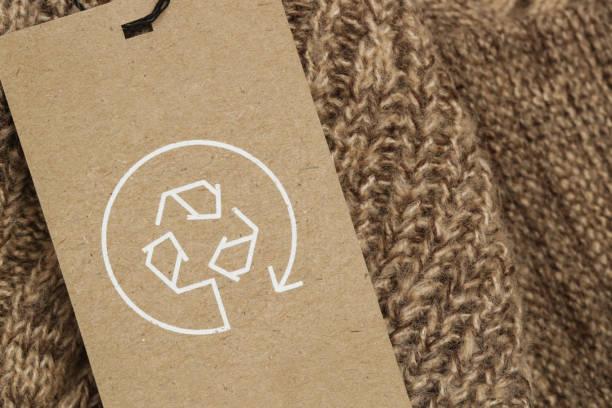The Lifecycle Impact of Textile Recycling

The Lifecycle Impact of Textile Recycling
The growing concern over environmental sustainability has placed textile recycling in the spotlight as a critical solution for waste reduction and resource conservation. From fast fashion to household linens, textile waste has ballooned in recent decades—placing a heavy burden on landfills, natural resources, and the climate. Fortunately, textile recycling offers a smart, scalable way to extend the lifecycle of fabrics, reduce emissions, and promote a circular economy.
Understanding the Fabric Waste Crisis
Globally, the fashion and textile industry is responsible for nearly 10% of total carbon emissions, making it one of the most polluting industries on the planet. In the United States alone, more than 17 million tons of textiles are thrown away annually, and only about 14% are recycled.
Textile waste doesn’t just disappear. Most of it ends up in landfills, where synthetic fibers like polyester can take 200+ years to decompose. Along the way, these materials release microplastics and harmful chemicals that pollute water and soil systems.
The solution? Keep textiles in use for longer—and recycle them when they reach the end of their initial purpose.
What Is Textile Recycling?
Textile recycling is the process of taking unwanted fabrics and garments and turning them into useful new materials. These materials can be reused in fashion, construction, automotive, or industrial applications. There are two primary pathways:
-
Reuse & Repurpose: Clean and wearable textiles are sold in second-hand markets or donated to those in need.
-
Material Recycling: Unusable textiles are shredded into fiber and transformed into new items such as insulation, padding, wiping cloths, or even new garments.
This process not only reduces the volume of waste but also cuts down on the energy, water, and chemicals needed to produce virgin materials.
Environmental Benefits of Textile Recycling
Textile recycling offers significant benefits across the product lifecycle:
♻️ Reduces Carbon Emissions
Producing recycled fibers requires far less energy than creating new ones from raw materials. This results in lower greenhouse gas emissions, helping combat climate change.
💧 Saves Water and Chemicals
Manufacturing textiles from scratch involves massive water use and chemical processing. Recycling drastically reduces the demand for both, conserving precious natural resources.
🗑️ Diverts Waste from Landfills
By redirecting fabric waste from landfills, recycling reduces the release of methane and prevents long-term pollution caused by non-biodegradable fibers.
🌱 Promotes Circularity
Textile recycling supports a circular economy model, where resources are reused again and again, rather than being discarded after a single use.
The Business and Community Case for Recycling
Textile recycling doesn’t just help the environment—it also delivers social and economic advantages:
-
Job Creation: The sorting, handling, and processing of recycled textiles provide employment opportunities at the local and national level.
-
Cost Savings: Businesses can reduce waste disposal costs and enhance brand reputation by incorporating recycling programs.
-
Consumer Engagement: Sustainable practices build customer trust and loyalty. People want to support brands and communities that care about the planet.
How Individuals and Communities Can Help
Everyone has a role to play in textile recycling. Whether you're a household, a business, or a community leader, small steps add up.
✅ Donate Smart
Only donate clean and dry textiles. Many organizations and charities accept clothes, towels, bed linens, and shoes for reuse or recycling.
✅ Separate Textiles at Home
Have a separate bin for textiles that are too worn to donate. Many communities now offer drop-off programs for non-wearable fabrics.
✅ Host Local Drives
Schools, faith groups, and neighborhood associations can organize textile recycling events to raise awareness and keep fabrics out of landfills.
✅ Support Recycled Products
Buy clothing and home goods made from recycled materials to close the loop and reduce demand for virgin textiles.
Overcoming Recycling Challenges
Despite the benefits, textile recycling still faces hurdles:
-
Lack of Access: Many areas lack convenient drop-off points or collection systems for textiles.
-
Mixed Fibers: Items made from blended materials (e.g., cotton/polyester) are harder to recycle with current technologies.
-
Contamination: Soiled or wet textiles can ruin entire recycling batches.
The good news? Innovations in textile sorting and fiber recovery are helping to solve these issues. More brands and municipalities are also investing in solutions to expand access and improve efficiency.
The Future of Sustainable Fabric Management
Textile recycling is quickly evolving thanks to technological advances and rising consumer demand. From automated fiber-sorting systems to chemical recycling that breaks down complex materials, the future is bright for fabric recovery.
Policy changes are also coming into play. Extended Producer Responsibility (EPR) programs are emerging in countries like France and the Netherlands, requiring manufacturers to manage their product’s end-of-life. Similar models are expected to expand globally.
Conclusion
Textile recycling is more than just a trend—it’s a critical piece of the sustainability puzzle. By extending the life of garments and rethinking how we handle waste, we can significantly reduce environmental damage, support local economies, and empower communities to live more sustainably.
At Green City Recycle, we’re proud to lead efforts in building a future where no fabric goes to waste. Our textile recycling solutions make it easy for individuals and businesses to reduce their footprint and take real climate action.
Join us today and be part of the movement toward a cleaner, greener world—one textile at a time.







